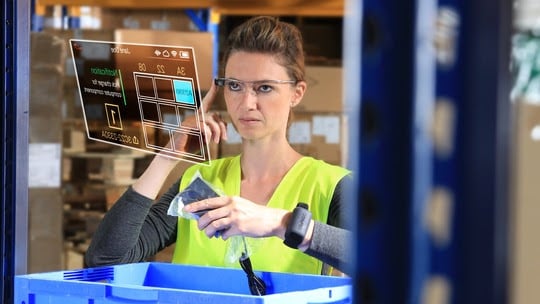
Top tips: 7 steps for choosing an AR Workflow App Platform
It depends on the software- 7 important selection criteria for the right augmented reality platform
Companies using smart glasses or other wearables need local apps running on these devices. These apps give the user relevant information whenever he or she needs it to conduct a task correctly and efficiently. The devices are for example used to support order picking in logistics, for service and maintenance works of machines or for expert video calls or remote support respectively. Besides creating your own apps, augmented reality platforms also help companies to manage all the different devices and workflows as well as enabling better communication with deployed workers. But what are the crucial points enterprises must consider when selecting an AR platform? Frank Lampe, SVP Marketing at Ubimax, lists seven criteria:
- Avoid isolated solutions
Not a single company wants to implement a different solution for every single task – therefore you should keep in mind to choose an AR platform supporting a variety of applications along the entire value chain.
- Easy integration
It is also important that the platform can be easily integrated into an already existing IT infrastructure. These include for example the warehouse management, resource planning or production management system.
- Broad hardware spectrum
Tablets or smartwatches may suit some working environments better than smart glasses, so AR platforms should support a variety of different hardware options. This enables companies to use exactly the device fitting their respective working environment in the most effective way.
- System independence
To be both flexible and future-proven, the AR platform should work on all available operating systems and thus support Android as well as Windows-based devices.
- Easy and consistent management
Even when using different hardware models like smart glasses and scanners from different suppliers, the platform should be easy to manage. The same applies when workers are assigned different tasks and individual processes. The platform should also enable integrating and maintaining all devices, tasks, and processes under a consistent interface.
- Flexibility to make changes
It is crucial for companies to be able to integrate new workflows quickly flexibly in addition to modifying existing processes. Important in this context is that they can do the creation and editing of workflows swift and simple and cost-efficient by themselves – without latencies and additional costs.
- Consider the experiences of others
Even though it may be new ground for many companies to choose an AR platform, others have already made this step. Enterprises should listen to these experiences and select a platform that has already been used extensively by other companies under real conditions. The more installations have been done, the more mature and reliable is the solution, leading to a more smooth and trustworthy use of it.









